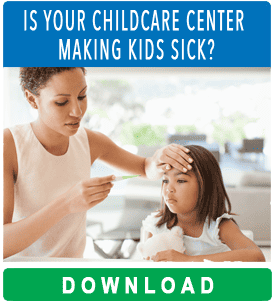Originally published by AAP News & Journals Gateway
Approximately 60% of U.S. children younger than 5 years of age are enrolled in a child care program. Young children who attend child care may experience a two- to threefold increase in the risk of respiratory or gastrointestinal tract infections relative to children not in a child care setting.
Which of the following statements regarding child care and infections are correct?
a) An infant with diarrhea should be excluded from child care.
b) Giardia, Cryptosporidium, norovirus and Escherichia coli are among the most common causes of gastroenteritis in child care settings.
c) Probiotics administered to children in child care decrease the risk of infection.
d) The immunization record of each child enrolled in child care should be updated annually.
e) There is no difference between a disinfectant and a sanitizer.
Answer: b and d are correct
With certain exceptions, a child with diarrhea that can be contained within a diaper may be permitted to attend child care.
The child care facility administrator should observe staff members and volunteers for signs of illness. Workers with vomiting, diarrhea, jaundice or sore throat with fever should be excluded from work to reduce the risk of person-to-person transmission. It has been shown that flushing the toilet generates an aerosol that may contain viral or bacterial pathogens that settle and survive on surfaces, particularly those areas closest to the toilet. Closing the toilet lid can reduce the number of microorganisms released into the air.




